1. Buck the trend:
(v.) To differ in opinion to most others. To go against the grain, to be an exception to the rule.
At a time when most people seem eager to jump on the latest “fitness band-wagon”, and new workout fads and complex training systems are popping up by the minute, it can be challenging to sort through it all and find out what really is effective versus what is fluff. It seems ironic that while the mainstream fitness industry is booming, the number of people who are out of shape and suffering from health issues such as obesity, diabetes, hypertension, heart disease, and stroke, is still on the rise. With so much access to health-related information, and so many popular fitness options available, one might think that these problems should be disappearing. Or maybe this information overload is part of the problem. Does getting in shape really need to be complicated?
There are a growing number of fitness professionals, including myself, who are gravitating back to the basics rather than following the status quo. There are many popular fitness trends that need to be challenged. One should be wary of blindly following the newest fitness fads just because “everyone is doing it”, just as one should be cautious about pursuing an exercise routine simply because “it’s been done that way for years so it must be right.”
Let’s take a quick look at some of the current popular fitness industry trends that may need to be re-evaluated:
Low Calorie, Low Fat Diets:
Many people still believe that eating fat will make you fat. This can lead to the avoidance of an important nutrient that is key in getting leaner. There are still popular weight loss diets (such as “Dr. BurnOut”, as I like to call it) that focus on cutting calories WAY down, which can mess up your metabolism and cause wasting of muscle tissue. Although your portions and caloric intake obviously need to be managed, the focus also needs to be on eating “better” (the right foods), appropriate macronutrient ratios (the right amount of protein, fats, and carbs), rather than just “less”.
Just Do More Cardio:
This is another common fitness trend – the belief that performing hours and hours of steady state cardio is the best way to get lean, fit, and in shape. In most cases, the opposite is true. Not only is excessive cardio time consuming, but there can be negative side-effects. There are far more effective and efficient methods of getting and staying leaner. I won’t go too in-depth in this post, because I already posted an article on this very subject on my blog… you can read it at Cardio For Weight Loss.
This humorous animated video I produced summarizes a few of these trends and fitness myths, such as Very Low Calorie Fad Diets and excessive cardiovascular exercise:
Health Foods (that aren’t really health foods):
Soy products have become all the rage, with vegans, vegetarians, health-foodies, and various “health experts” promoting soy as a health food. If you were to carefully review the thousands of studies published on soy, I strongly believe you would reach the same conclusion as I have… which is, the risks of consuming unfermented soy products far outweigh any possible benefits. On top of that, genetically engineered soy poses additional health hazards over and beyond the damage caused by unfermented soy itself. The only type of soy I recommend is fermented organic soy products.
Passive Stretching:
Most people I talk to, and even some trainers, still believe that stretching should be one of the primary components of an exercise routine. The popular misconception is that everyone should stretch before and after exercise, maybe even during, and on your rest days… heck, just stretch ALL the time! What if a particular muscle group isn’t actually tight, but rather it’s weak and unstable? Doesn’t matter, stretch it anyway… stretch everything! Looser is better, right? Sorry… not exactly.
The problem is that traditional passive stretches, where you lean into something (or someone leans on you) to ‘force’ a stretch can temporarily cause that muscle group to “shut off”, making it weaker and less stable. This is NOT what you want before exercising! In fact, there are much safer and more practical ways to increase range of motion, as discussed in my ARTICLE on The Truth About Flexibility Training. Also read what Mike T Nelson has to say about static stretching in his article “The 4S Rule: Static Stretching Still Sucks.” Check those out and let me know what you think in the comments section below. I know this may not be a popular opinion, but it is based on the most recent research as well as my own experience. I’m interested in hearing your own thoughts on the subject as well.
 Foam Rolling:
Foam Rolling:
I know, I’m treading on sacred ground here! Foam rolling (what some call SMR, or Self-Myofascial Release) has almost become a cult now, with everyone from therapists, to trainers, to coaches recommending the almighty foam roller to their clients. My issue with foam rolling is based on similar grounds to my issues with passive stretching. To me it is strange that many of the same savvy trainers who understand that passive stretching is not a good idea before training are now recommending foam rolling before exercise. The negative effect is almost exactly the same! To learn more about this trend I highly recommend that you check out my article called Is Foam Rolling Really Such a Good Idea.
Balance Training:
Another popular fitness trend, which I believe (like foam rolling) was “stolen” from the physical therapy environment, is Balance Training. In general, I’m referring to the excessive use of Bosu Balls, wobble boards, stability balls, squishy discs and whoopie cushions in our mainstream fitness industry. I see every other trainer setting their clients up on unstable surfaces, performing complex balancing acts holding light weights, in an effort to improve “core strength” or proprioception. This is not so-called functional training. In fact, it usually has a poor carry-over to real life or sport activities, and can lead to de-training in the long run. There is a place for these tools in the rehab setting, but the point is to progress to more challenging, ground based strength training exercises. Gary Rothbart wrote a great ARTICLE on this subject called The Truth About Balance Training. It’s short and to the point… worth a read!
Martin Rooney, of Training For Warriors, posted a hilarious video called “The Most Outlawed Exercise” that includes all of the subjects above. I love how the trainer at the beginning is like the ‘epitome’ of functional training, balancing on a Bosu ball with his TRX and Kettlebell. The “Fitness Police” is also a nice touch, cracking down on outlawed exercises, and making sure everyone is stretching, balancing, and foam-rolling, LOL! The point Martin is trying to get across, with a little humor, is to not get obsessed with every fitness trend that comes along… stick with the basics and keep it simple. It’s all about resistance! Check out the video:
Yoga:
Oh no, I wouldn’t dare say something unfavorable about Yoga, would I? That’s going too far! If foam-rolling is a cult, Yoga is the mother of all religions. This is the trend of all fitness trends at present… everyone is doing Yoga, even the movie stars, so it must be the bomb, right? OK, first let me say that some traditional yoga practices, taught by authentic yoga masters, can be beneficial by promoting relaxation, healthy breathing, better body awareness, and can enhance wellness in other ways. However, many yoga exercises are basically passive stretching, which put your body into extreme positions where one may not have much muscular control or joint stability. For the average person this can actually increase the risk of injury. The problem is compounded when people take on yoga as their sole form of exercise, and neglect to use a form of resistance training to increase joint integrity and strength.
In addition, yoga has come a long way from the ancient practices taught by masters, one on one, progressively learning the art over several years. Nowadays yoga has been bastardized to group fitness classes taught by kids who picked up a quick certificate, and often combine it with other trends like “Yoga-lates”, or “Yoga-Boxercise” or “Spin-Yoga-Body-Pump”. Even with the best instructors teaching more traditional yoga, clients are still getting hurt. I know several people personally who have been injured doing yoga. The following articles explain why… if you’re participating in yoga yourself I highly recommend you give them a quick read:
Injuries Associated With Yoga (Gary Rothbart)
When Yoga Hurts (Time Magazine)
Yoga has Healing AND Hurting Powers (The Star)
How Yoga Can Wreck Your Body (New York Times)
The Perils of Yoga for Men (New York Times)
Yoga Bad for your Knees (The Telegraph)
I understand that this post might rub some people the wrong way, and that’s OK as long as it’s gets you thinking. My primary goal is to help others reach their fitness and performance goals more effectively… sometimes that means bucking the popular fitness trends.
Take the time to educate yourself, make the necessary lifestyle changes, and be prepared to invest some time and energy to improve your health, fitness, body composition, and appearance. You are worth it!
Oscar Wilde was quoted as saying “Everything popular is wrong.” That’s a bit extreme, but maybe he has a point.
Stay fit!
Josh
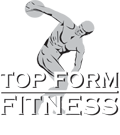
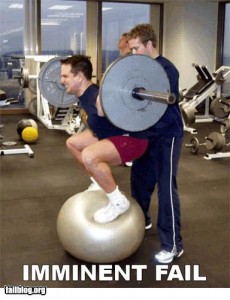
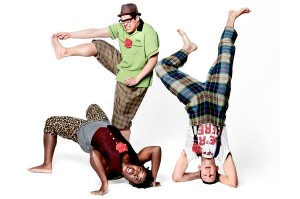

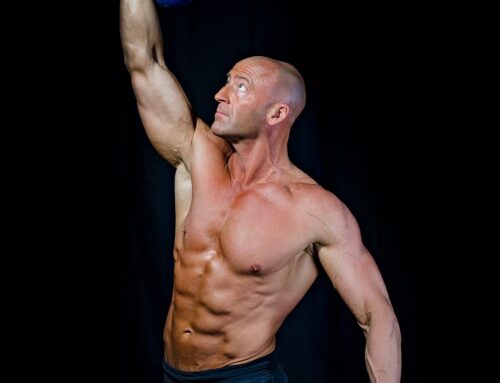
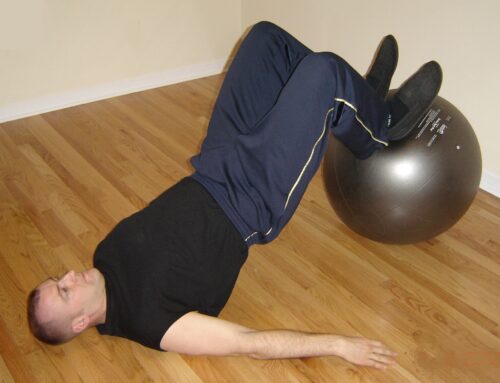



Hi there!
The vid was hilarious but I totally do get the point!
However…Since just recently I started to train again(weightlifting with purposely build-in heavier days) and HITT and some moderate cardio. And every morning I start me day with losening all of my 600+ muscles in my body with a active mobility program workout by Dax Moy. And I must say it does wonders for me.
But I was indeed also thinking about adding more active relaxtion stuff such as yoga for instance on non lifting days…So….thanks indeed for putting things in perspective here..;)
Hey Xena,
Thanks for the comment. Your routine sounds pretty decent. The thing about most of the mobility work from Dax Moy is that it is still focused mostly on ‘active’ range of motion, meaning that you are actively engaging your own muscles to increase flexibility and mobility, rather than just forcing the static stretches passively with your muscles not involved. If you check out my article on flexibility (in this post) you’ll read that this type of flexibility work is actually safe and healthy, so I think we’re still on the same page with your approach. Sounds like you’ve done your homework! But I would still be cautious with introducing Yoga… might be better off with Tai Chi, or meditation. Good luck and stay strong!
Great post!
[…] Source: https://top-form-fitness.com/fitness-blog/un-popular-fitness/ […]
Thanks for your reply. Will deffo look into Tai Chi and meditation since I always already have had a interest in both(I even have a book with Tai chi exercises that I haven’t look in for ages….!!). So thanks also 4 reminding me! 🙂
hello Josh,im 27weeks pgnreant and its my first time to see your videos i already started doing these exercises and it felt good i just want to ask if these exercises can help me through my delivery?how many times a day and how many hours should i exercise?are these exercises enough eventhough i dont have time to walk or jog everyday?thank you very much for uploading videos god bless and take care
Hello Nehad,
Reduce the intensity of exercise as you approach full term, and avoid exercises lying flat on your back, or with anything with impact. Focus on breathing control, and for your core use plank type exercises instead of crunches. 3 hours per week is adequate (ie: 30 minutes / day most days, or an hour a day every other day). Don’t overdo it and consult with a doctor. I suggest you Google ‘exercise during pregnancy’
Could you give averages for leelvs reached for exercises such as pushups, sit-ups, planks, bench presses, squats, deadlifts, bicep curls, lateral raises, 90 jogs, sprints as well as others that you think would provide a good indication of a person’s fitness level? If averages are not possible, could you give examples of individuals who have reached very high leelvs of fitness?
Hello, there are averages listed for bodyweight exercises ie: sit ups, pushups, planks, etc, and statistics for powerlifting exercises ie: bench press, but not so much for isolation ex’s ie- curls, laterals, etc. Much of this depends on your body weight also. You may benefit from having a fitness assessment from a fitness professional. If you want some examples, aim for 90 seconds minimum holding a plank, pushups (50 for men, 10 full pushups for women); the other lifts really depend on bwt, and sprint work depends on your goals. Email me for further discussion if you want… I need more info from you and I can better answer your question.
[…] to improve their fitness this year is to look for evidence-based fitness plans rather than just following the trends. There is so much research available to everyone today; take the time to do your own research to […]
… [Trackback]
[…] Informations on that Topic: top-form-fitness.com/fitness-blog/un-popular-fitness/ […]
[…] Fitness Trends I Wish Would Die […]
Vid was way dorkus, but the point and the article are spot on! I’m with you! Resistance is key!! (TG, I hate those effin foam rollers and yoga. Glad someone had the nerve to say proclaim it to the WORLD!!) PS…kegels are still good for us chicks..hahaha